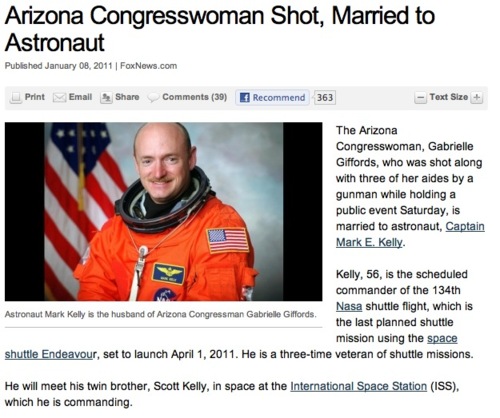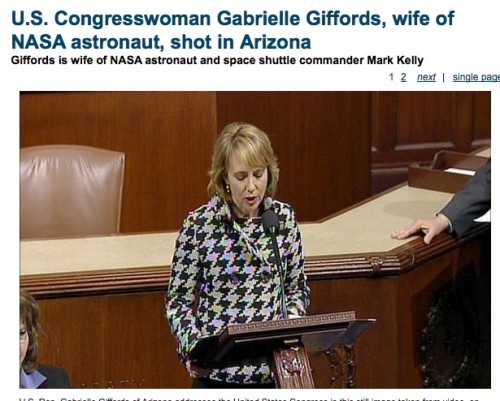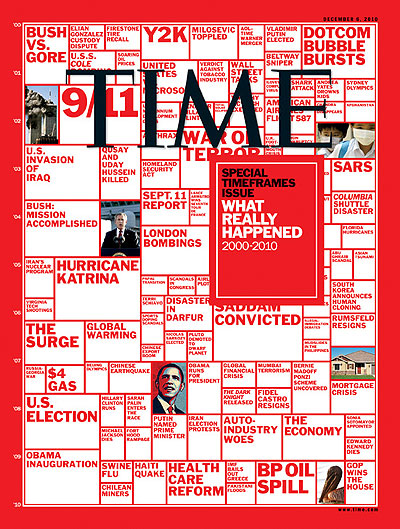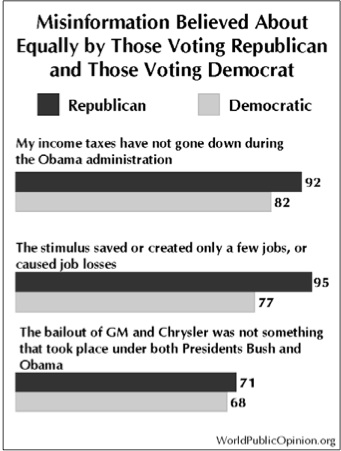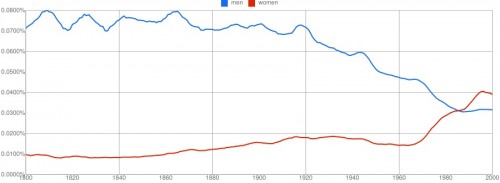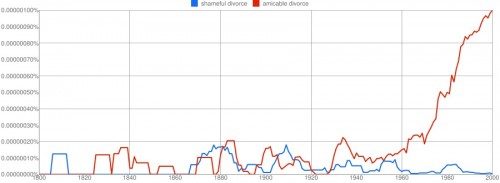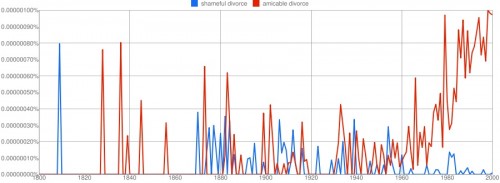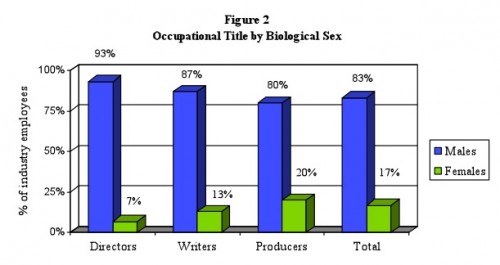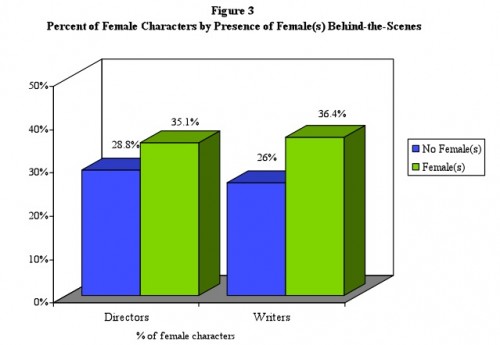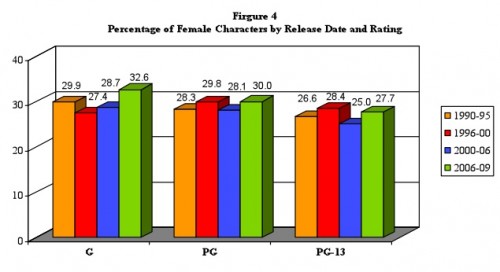As most of you probably know, yesterday Representative Gabrielle Giffords, of Arizona, was one of 18 people shot at a public event yesterday. Elliott J. went online to find more information and came across this piece from Fox News:
The piece has now been expanded somewhat, with a photo of Giffords added, the photo of her husband pushed to the bottom of the page, and the title changed.
When I was googling looking for the Fox story, I came upon this from the website of the Orlando Sentinel:
I get that the point of a title is to draw people in and give them information that might make the topic seem interesting or relevant to them. And I guess NASA has a center in Florida, so maybe being married to an astronaut has special resonance there.
But really: a woman had a person walk up to her in a crowd and shoot her in the head, also shooting other people and killing some of them. I would hope that, even if she weren’t a member of Congress, that in and of itself would be sufficient material for a headline, regardless of who the victim’s husband was.
UPDATE: Kat P. sent in another example from the Galveston County Daily News. The headline reads: “Wife of shuttle commander shot during rampage.”

